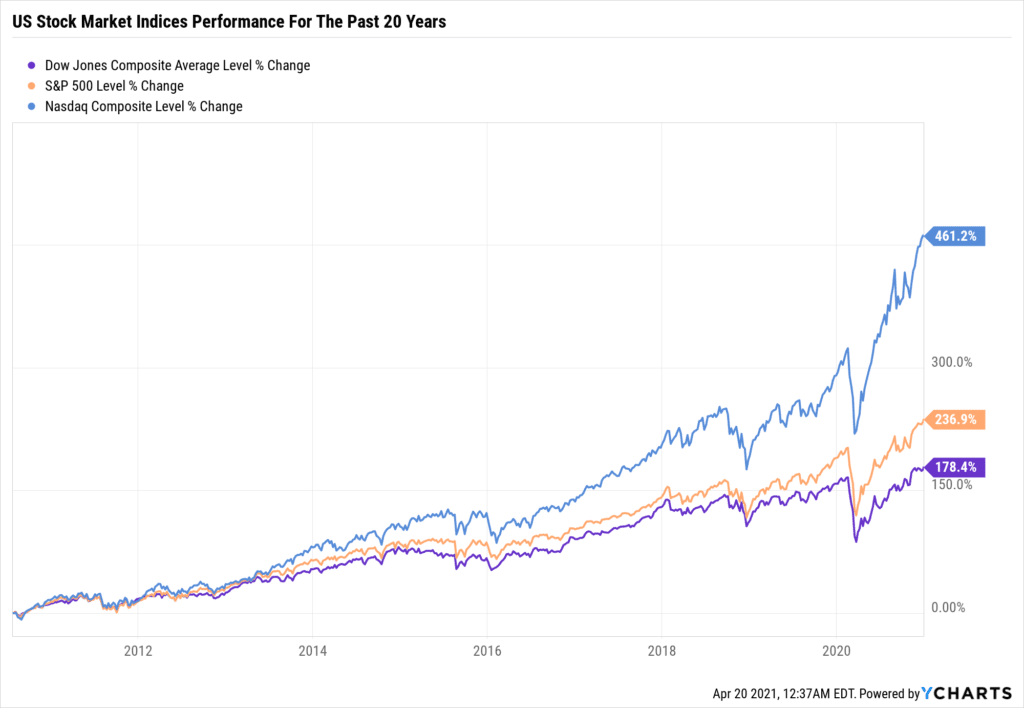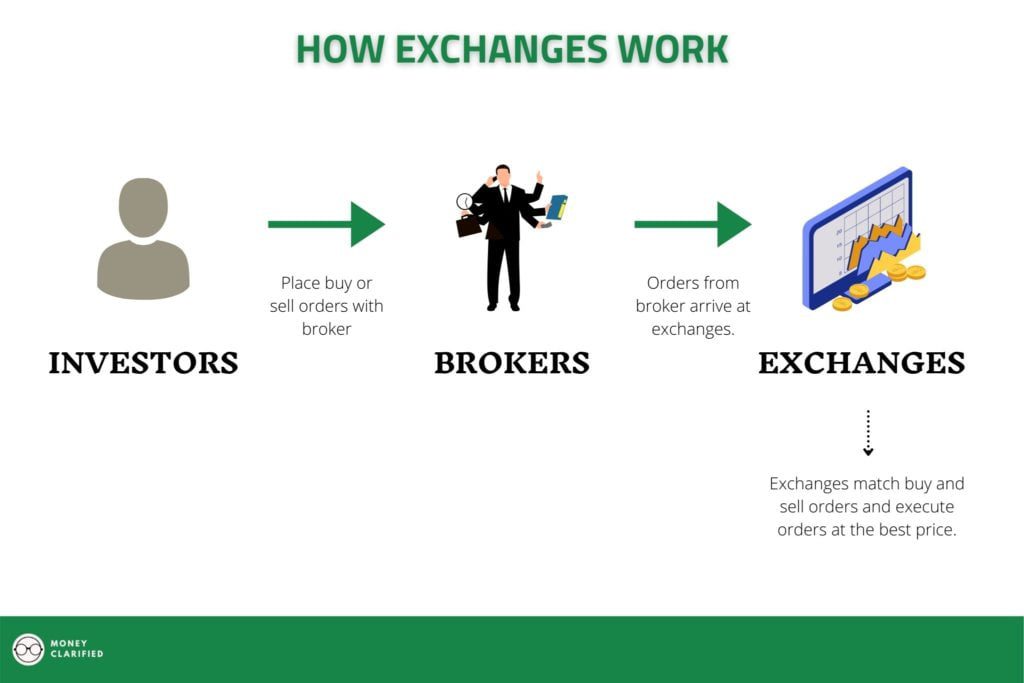This post may contain affiliate links. We may receive compensation when you click on links to those products at no additional cost to you. Read our full disclosure here.
In a previous post, we touched on the WHY of investing and how it can make money work for you to build wealth and achieve your goals and objectives. With the knowledge of the WHY, the next important step before starting to invest is to understand the bigger picture of WHAT you’re investing in. In this article, we’ll break down what are financial markets, capital markets, as well as stock and bond markets.
*While this post may seem a little more technical and boring, I believe it is crucial to understand the bigger picture of the market first to bring more clarity on what you are actually investing in before you start to invest.
Financial Markets
When one thinks about investing, the stock market probably first comes to mind instinctively. However, the stock market is only one type of financial market. Just like how a food market is a place to buy and sell food, financial markets are the places where people buy and sell financial assets (stocks, bonds, cash, mutual funds, etc.). There are two main types of financial markets:
- Capital market
- Stock market
- Bond market
- Forex market
- Derivatives market
- Money market
Capital Markets
TLDR: Capital markets provide long-term (>1 year) financing and capital for businesses looking to grow.
Companies, governments, and/or organizations are always looking to raise money (aka capital) to fund their various projects for long-term growth. On the other hand, investors who have money are finding avenues to invest their money.
Capital markets exist for that reason – A marketplace to facilitate the transactions between those looking to raise funds to grow and investors looking to invest money. This mutually beneficial relationship allows:
- Investors who are willing to risk some money for the potential to make a profit.
- Entities get the capital they need.
Here’s an example to illustrate how capital markets function: Imagine John started a t-shirt business. After laboring for a couple of years, the business is starting to pick up and John needs more resources to scale the business. For example, he needs money to hire people, stock up inventory, and even purchase new equipment to manufacture more t-shirts and meet the growing demand. John doesn’t have the capital to do any of those but is forecasted to make millions in revenue for the year if he does and executes successfully.
So what can John do? He can raise capital in the capital markets via the stock market (give ownership to investors) or the bond market (borrow money from investors).
Stock Market
The stock market is a type of capital market. It comprises many different stocks, with each one representing an ownership interest in a company. When an investor buys a share of stock in a company, the investor is essentially buying fractional ownership of it. Investors buy shares of companies they believe will grow in value (assets and profits) as the price of the invested shares should increase with it as well.
For clarification purposes, the term “stock” refers to the broader concept of ownership of a company, and “shares” are the individual unit of ownership.
Going back to the previous example, John can raise money to fund the company’s growth by issuing shares of stock for his company. Investors that are interested in his company can give John the money he needs to grow his business while they get part ownership in his company. If the company grows and generates profits, the investors holding shares can potentially be rewarded in two different ways:
- Increase in share price, aka capital appreciation
- Dividends – a portion of a company’s profit that is paid out to eligible shareholders
Stock Indices
The stock market is huge and can be broken down in many ways. This is where indices are used to track the performance of the stock market. An index is essentially a compilation of stocks and can be measured to determine and analyze the performance of the stock market, or a sector of a market.
Examples of popular stock indices are:
- Dow Jones Industrial Average, aka Dow
- Consists of the 30 largest public companies in the US.
- Stocks with a higher price are given more weightage.
- S&P 500
- Consists of the 500 largest public companies in the US.
- Experts believe this is one of the most accurate ways to track and measure the US stock market.
- Stocks with a higher market cap are given more weightage.
- NASDAQ
- Includes all the companies that are traded on the NASDAQ stock exchange.
- Consists of mostly technological companies.

Stock Exchanges
Stock exchanges are the actual places where stocks are traded. As it is not quite feasible for companies to sell shares directly to every individual investor (it will be a mess!), stock exchanges help companies sell stock to investors easily, while also creating a secondary market for investors to buy and sell shares with others as well. In a stock exchange, stockbrokers would be the ones conducting the buying and selling for clients.

Examples of stock exchanges are:
- New York Stock Exchange (NYSE)
- NASDAQ
- London Stock Exchange (LSE)
- Over-the-counter market
Bond Market
The bond market is a type of capital market where companies can issue bonds and investors can buy and sell bonds. A bond is essentially a loan, whereby investors can lend money to companies, governments, and organizations that issue bonds. Investors will receive interests, aka the coupon rate, from the issuers for their investment in the bonds. We’ll cover more on the characteristics of bonds in a future chapter.
Bonds are generally sold in two different markets:
- Primary market
- This is where a company or government organization would first issue a bond. Buyers will purchase it directly from the issuer in the primary bond market.
- The price of the bond is set by the issuer.
- Secondary market
- Those who bought bonds from the primary market can then resell the bonds to investors in the secondary market.
- Prices of the bonds can vary based on interest rates, demand and supply, and the maturity time of the bond.
Going back to the previous example, John can issue bonds to the bond market to borrow money. Investors who are interested in lending John money can purchase the bonds issued and earn interest for their investment. With the new injection of cash, John can now scale his business and hopefully generate enough profit to pay out interests on the bonds issued.
Money Market
TLDR: Money markets provide a short-term (<1 year) place to park your cash while earning some interests.
The money market is a market for short-term financial assets. Companies and governments often need access to cash at a low cost on a short-term basis and the money markets can provide that for them. These financial assets are meant for short-term investments and have maturities ranging from 1 day to 12 months and are extremely liquid (easily accessible).
Financial assets in a money market, aka money market instruments, include:
- Treasury Bills: A type of bond issued by the government. Extremely safe and provides a fixed interest rate and maturity date.
- Commercial Paper: Solid companies with prime credit can offer unsecured loans for cash in the form of commercial paper.
- Certificate of Deposit (CD): A savings account that pays interest on a fixed amount of money for a fixed period of time.
- Bankers’ Acceptance: Short-term loans used in foreign trade.
Investors that purchase money market instruments will provide the necessary short-term liquidity that companies and governments need in exchange for a small amount of interest at low risk. Thus, if you have cash laying around and just want to park it somewhere safe while earning a little interest and having easy access to it, you may want to consider investing in the money market.
The opinions expressed in this article are for general information purposes only and are not intended to provide specific advice or recommendations about any investment product or security. If you have questions pertaining to your individual situation you should consult your financial advisor.
This post may contain affiliate links. We may receive compensation when you click on links to those products at no additional cost to you. Read our full disclosure here.






